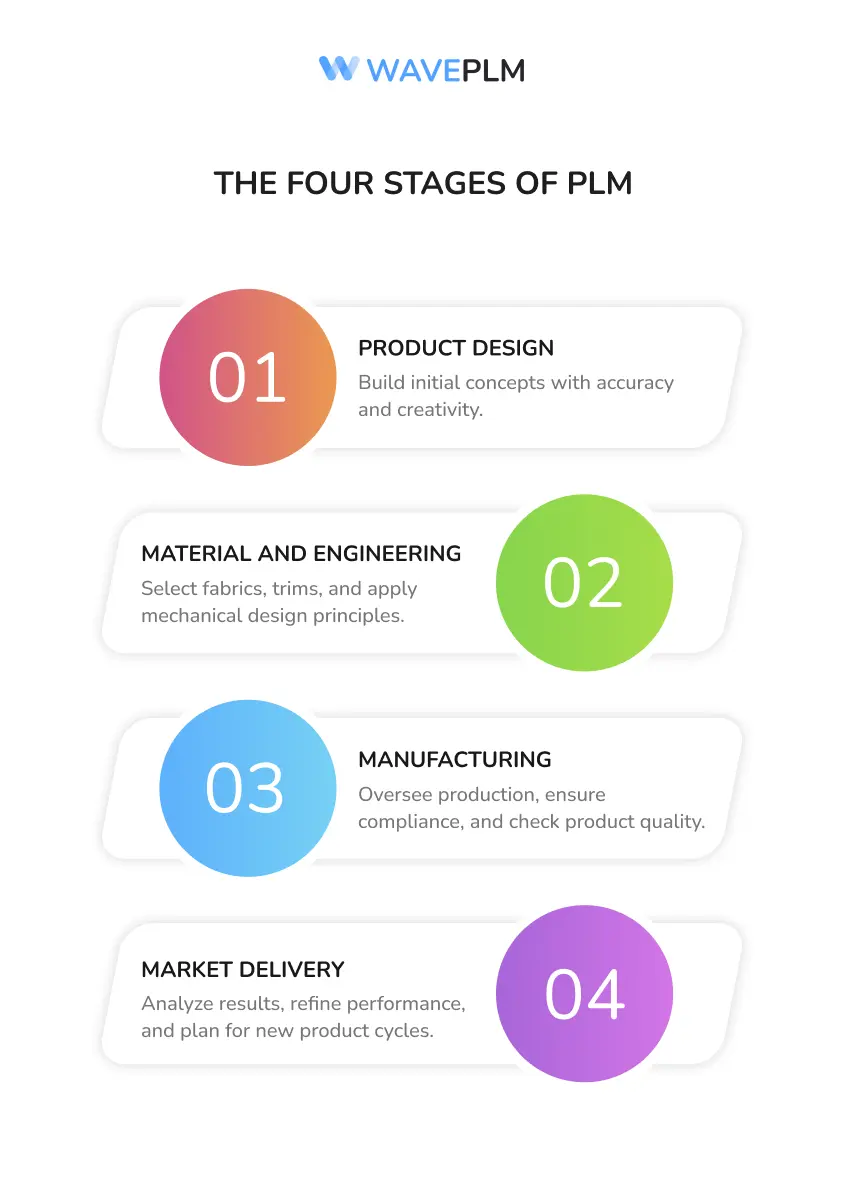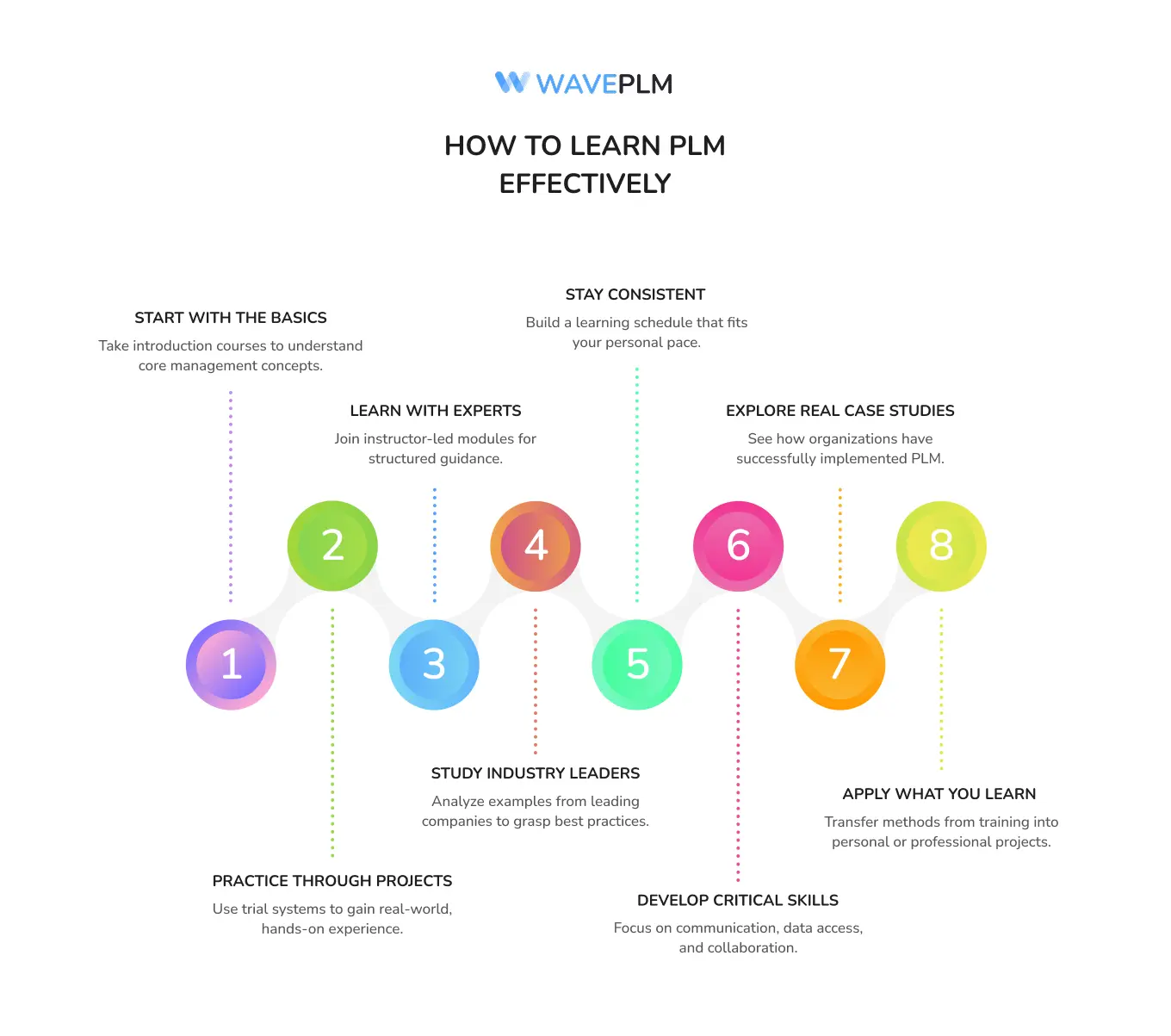
Introduction
The fashion industry today faces rapid changes in technology, consumer demand, and global manufacturing challenges. Brands must innovate faster while ensuring product quality, sustainable processes, and strong communication between teams. To succeed, professionals must combine creativity with digital expertise. A PLM certification offers exactly that advantage. Through a structured certificate program in product lifecycle management (PLM), learners gain a fundamental understanding of data-driven workflows, sharpen their communication skills, and build knowledge to manage every step of a fashion product’s life cycle.
This article will explain what a product lifecycle management certificate is, highlight the four stages of PLM, showcase types of courses, and explore how training prepares professionals for the digital transformation shaping the fashion market.
What is PLM Certification?
A product lifecycle management certification is more than a document—it is proof of expertise in managing data, coordinating projects, and aligning creative and technical processes. Holding a certificate means you can work with systems, interpret product data, and deliver high product quality while ensuring deadlines and budgets are met.
Most programs include:
- Introduction to product design workflows.
- Product data management (PDM) for consistent documentation.
- Communication methods for teams, vendors, and clients.
- Training in tools that support digital development.
- Case examples from global industries.
Completing such a certificate program signals to companies that you are ready to drive digital adoption, reduce cost, and contribute effectively as part of a modern team.
In addition, a certification helps professionals prepare for the reality of cross-functional collaboration. It strengthens understanding of concepts such as data access, product development cycles, and the importance of managing communication in large organizations.
Why Fashion Needs PLM-Certified Professionals
Fashion businesses now juggle shorter timelines, tighter budgets, and a push toward sustainability. Without effective management systems, mistakes multiply. Product lifecycle management PLM provides a digital hub where every stakeholder shares the same information. This ensures faster projects, smoother communication, and reliable data for decision-making.
Global brands have already proven the importance of PLM. For example, when companies adopt PLM training for employees, they reduce product development costs, improve time-to-market, and strengthen internal communication. Even smaller organizations benefit by ensuring product managers and designers work in sync.
Benefits of PLM Certification
| Benefit | How It Helps |
|---|---|
| Career growth | Stand out with recognized skills and attract top companies. |
| Productivity | Optimize processes, increase output, and reduce cost. |
| Sustainability | Track eco-friendly materials across development phases. |
| Communication | Clearer team alignment for complex global projects. |
| Cloud access | Flexible learning and working at your own pace. |
The benefit is clear: PLM-trained professionals help organizations achieve strategic goals faster.
The Four Stages of PLM
PLM aligns every role by connecting data, communication, and processes across the four stages:
- Product design: Build initial concepts with accuracy and creativity.
- Material and engineering: Select fabrics, trims, and apply mechanical design principles.
- Manufacturing: Oversee production, ensure compliance, and check product quality.
- Market delivery: Analyze results, refine performance, and plan for new product cycles.
Understanding these stages allows professionals to see how their work fits into the larger picture. For example, a product manager may focus on communication and coordination, while an engineer ensures the product design translates seamlessly into manufacturing.
These stages ensure transparency, reduce delays, and prepare professionals to manage critical steps in product development.

Types of Courses in PLM
PLM education is flexible, offering access to training across formats. Learners can select based on their schedule, career goals, and preferred pace.
1. Online Certificate Programs
- Self-paced and accessible globally.
- Provide hands on activities, simulations, and guided modules.
- Cover essential concepts like data management and digital communication.
- Useful for professionals who want to study while working full time.
2. University Programs
- Part of design, business, or engineering degrees.
- Offer a deep understanding of PLM concepts.
- Link theory with practice through projects and internships.
- Often include collaboration with instructors and peers for better learning outcomes.
3. Vendor-Specific Training
- Platforms like Wave PLM provide specialized programs.
- Include practical hands on sessions within real systems.
- Prepare you to create, manage, and develop actual industry projects.
- Provide modules that mirror real-world challenges and allow completion at your own pace.
These options allow learners to study at their own pace, with instructors guiding them through structured paths to completion.
Who Should Take PLM Training?
A certificate program in PLM suits a wide range of roles:
- Product managers: Gain a better understanding of processes and align projects with business goals.
- Designers: Create digital sketches, link to material data, and build innovative designs.
- Supply chain professionals: Improve global communication with vendors and logistics teams.
- Sustainability officers: Track eco projects, ensure compliance, and reduce production cost.
- Manufacturing engineers: Streamline methods, enhance efficiency, and implement smart technology.
The flexibility of training means that professionals from different backgrounds can join a program that matches their needs. Whether you want to specialize in design, supply chain, or business management, PLM skills will support your long-term career goals.
By completing certifications, each role adds measurable skills to their resume and brings value to their organization.
How to Learn PLM Effectively
To maximize the benefit of PLM training, follow these methods:
- Begin with introduction courses covering concepts of management.
- Dedicate time for hands on projects with trial systems.
- Join instructor-led modules for structured guidance.
- Use examples from leading industries to understand best practices.
- Stay consistent by setting a schedule that matches your own pace.
- Focus on critical skills like communication, data access, and collaborative development.
- Explore case studies to see how organizations have successfully implemented PLM.
- Apply methods from courses directly to personal or professional projects.
By completing program assignments, you gain the knowledge and confidence to apply PLM in real-world contexts.

Career Opportunities with PLM Certification
Earning a certificate in PLM unlocks roles across fashion, retail, and global industries. Opportunities include:
- Product Manager (strategy and planning)
- PLM Analyst (system optimization)
- Supply Chain Coordinator (logistics management)
- Digital Transformation Specialist (innovation projects)
- Engineering and manufacturing positions (process control)
Employers prefer certified professionals who can enhance collaboration, reduce cost, and lead critical projects. A PLM certificate program adds credibility to your resume and prepares you to compete in the global market.
In addition, many organizations now list PLM knowledge as a requirement in job postings. Adding the certification to your resume signals you have both the theoretical knowledge and the practical hands on experience to contribute immediately.
Why Choose Wave PLM for Training
Wave PLM combines practical modules, cloud flexibility, and a user-friendly user interface. Learners benefit from:
- Access to new product workflows.
- Structured programs tailored for fashion industries.
- Hands on sessions that let you develop and manage real-world projects.
- Expert instructors who help learners prepare for completion.
- Simulations that mimic real design-to-production cycles.
Wave PLM also ensures training stays relevant by focusing on sustainability, digital integration, and future-ready skills. The training is self paced, allowing learners to complete modules at their own pace and fit learning into their schedule.
This focus on practical skills ensures that completing training with Wave PLM leads to immediate workplace productivity and long-term career advantages.

Conclusion
Fashion’s digital transformation requires professionals who can bridge creativity and management. A certificate program in product lifecycle management PLM equips you with knowledge, skills, and the ability to create, develop, and manage global projects. By completing recognized certifications, you join a group of professionals ready to lead organizations toward innovation and sustainability.
If you are interested, start your PLM training journey today. Build your expertise, gain hands on practice, and connect with companies that shape the future of fashion and other global industries. With the right certificate, you can prepare for a career that combines design, technology, and management into one forward-looking profession.





Leave a Reply